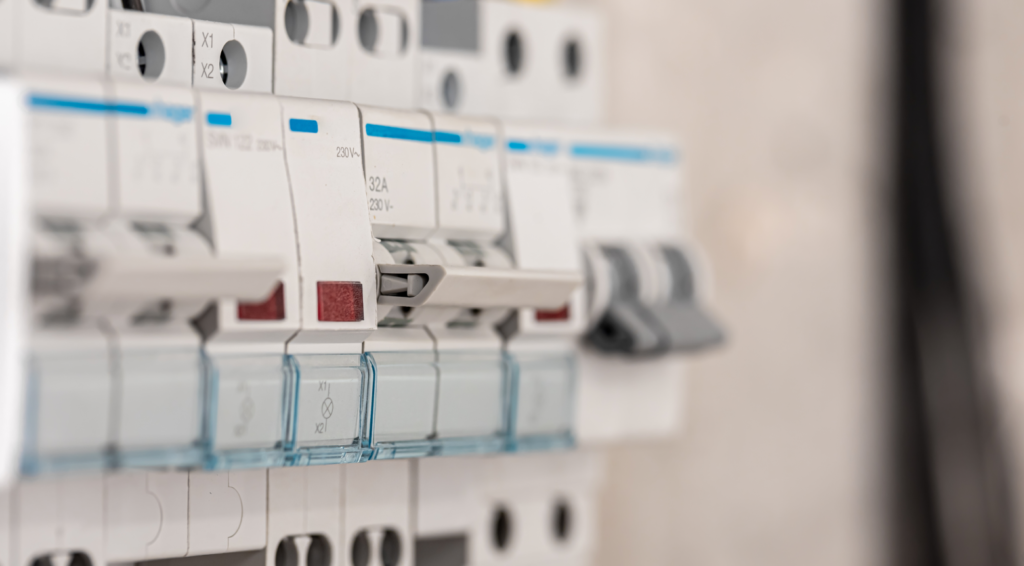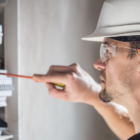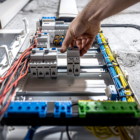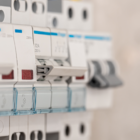The secret to a top notch Control Panel lies heavily in its design. From there, the concept is taken to the production stage, where the best materials and expert craftsmanship combine to create a stellar product worthy of any factory or production facility.
Many don’t realize the criteria that goes into creating a great Control Panel, which is why we’re going to break it down for you. Learning about these various criteria can give you a better understanding of what to look for – and which company to work with – when ordering Control Panels for your facility.
Design Layout
One of the most vital parts of a Control Panel design is the actual layout of components. Rather than stuff them all in a housing unit with no particular layout to follow, Control Panel designs often rely on a component hierarchy to make things easier. It begins with the main incoming power switch, typically assigned to the top-right corner of the panel. This switch acts as a linchpin in layout design, allowing components with higher voltage ratings to fill up the rest of the top-most space.
From there, components descend to the bottom of the panel in such a way that power distribution flows downwards through lower voltage ratings. Components such as fuses, distribution breakers and terminals are typically placed to the left, and paired to a main breaker. PLC and I/O terminals are then placed below power distribution components for better heat dissipation, thereby reducing the possibility of interference with other equipment. From a design standpoint, this logical flow guarantees a highly efficient Control Panel that is easier to diagnose and repair when a problem arises.
Panel Sizing
Space is always an issue, and it pays to reduce a workspace footprint as much as possible for the sake of foot traffic, transportation of materials, and room for new machinery. Control panels may not seem as if they take up a lot of space, but it’s still an issue to consider. It can be difficult to find the right space to install Control Panels, but it’s vital that they have enough room to operate properly.
A big part of this is due to heat-related issues. Vertical space is especially vital for making sure that heat dissipates upwards, rather than builds up within a confined area. The higher the temperatures, the greater the risk of a fault. If done properly, it could even allow companies to save money that would otherwise be spent on AC units. When installing Control Panels, more space is better, especially if your operation will expand in the future, necessitating the installation of more components over time.
Proper Labeling
Labels prevent mishaps – it’s just that simple. Ambiguous or non-existent labeling can create some real problems, and should be considered a safety hazard. Every component in a Control Panel should be labeled correctly, right down to power distribution wires.
Speaking of wire labeling, it’s wise to follow a precedent of labeling each wire according to the terminal number it is attached to. In cases of PLC I/O wiring, it should follow the appropriate syntax associated with its PLC address. Proper labeling reduces and/or eliminates confusion, provides greater safety, and makes it easier for repair personnel to diagnose an issue later on.
Correct Wireway Design
Wireways follow a simple goal – to terminate easily when needed. Therefore, internal panel and I/O wiring requires the right type of wireway, as well as amount. This means adequate room must be left, including horizontal space in case of future expansion.
Like before, proper labeling applies to wireway work as well. This will eliminate confusion and downtime during periods of modifications, repairs or diagnostic work. Ample spacing is a must for correct wireway design, and too little can have drastic ramifications on the efficiency of the unit.
Conclusion
Understanding the nature of Control Panels can give companies clear insight as to how they work, and what requirements they have when it’s time to finally install them. By following the above material, you’ll be able to plan out the deployment of your Control Panels even before entering the design phase.
VLS Group specializes in top-tier Control Panel design, and we understand all of the criteria necessary to design, create and install them properly. If your company is in need of new Control Panels, we’d love to work with you on your next project.



